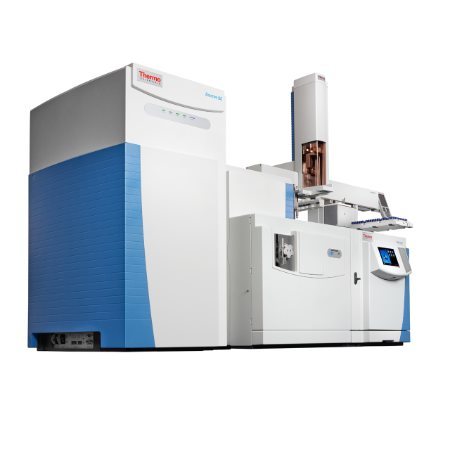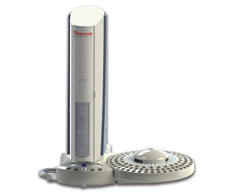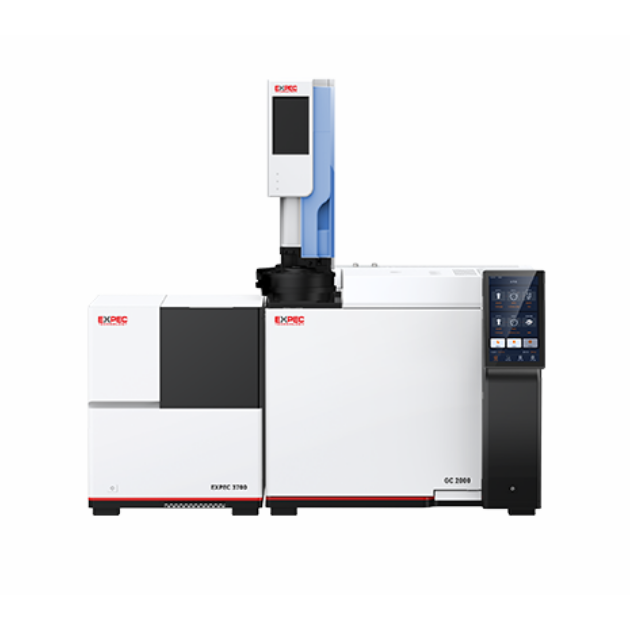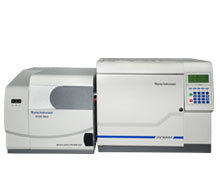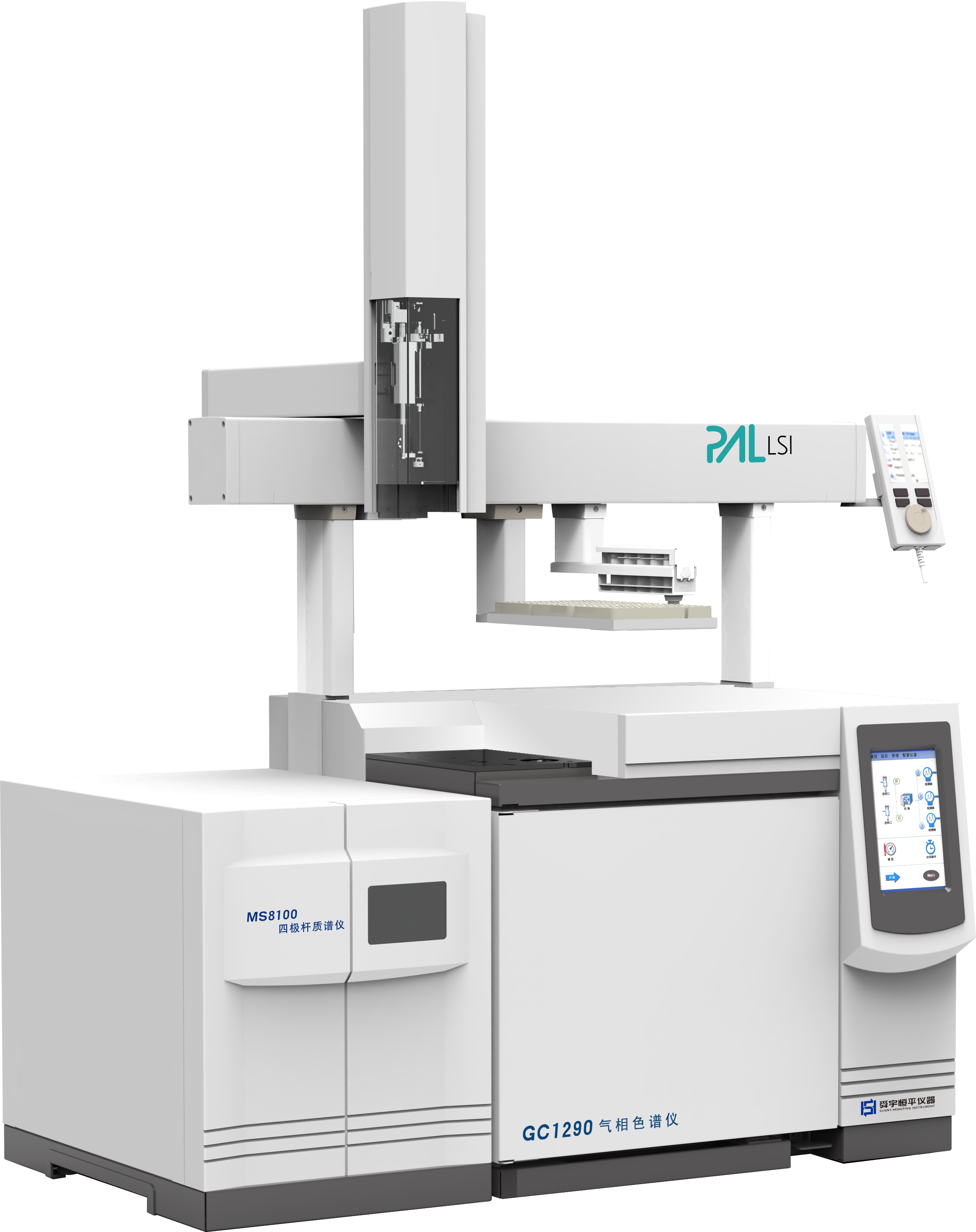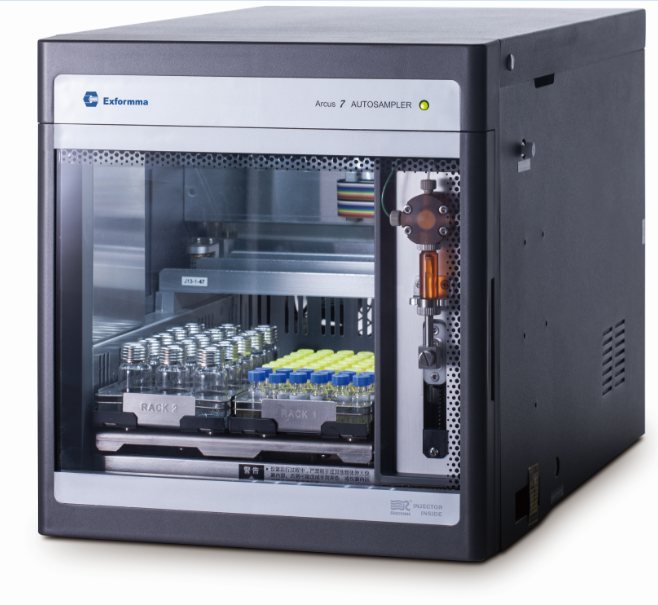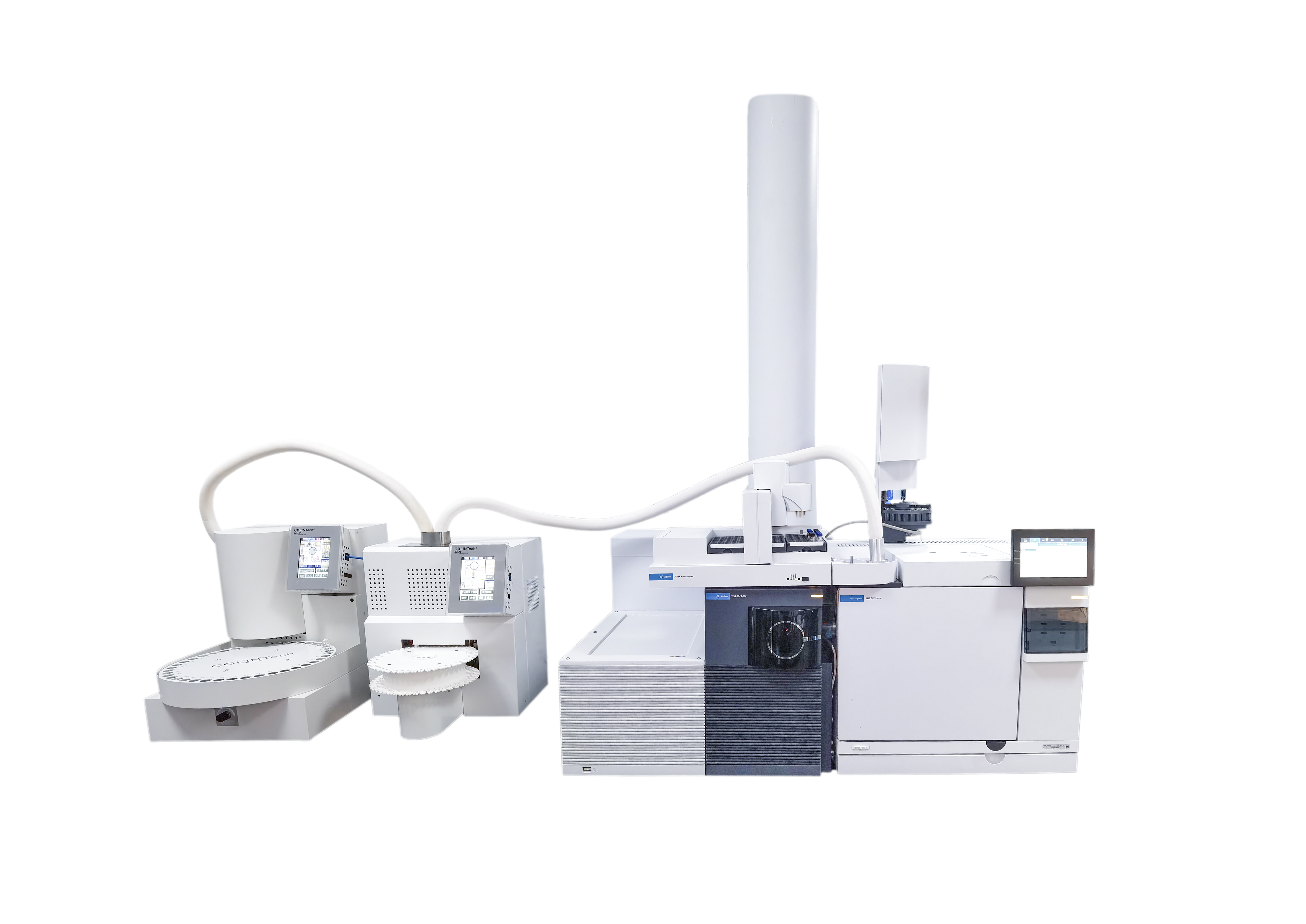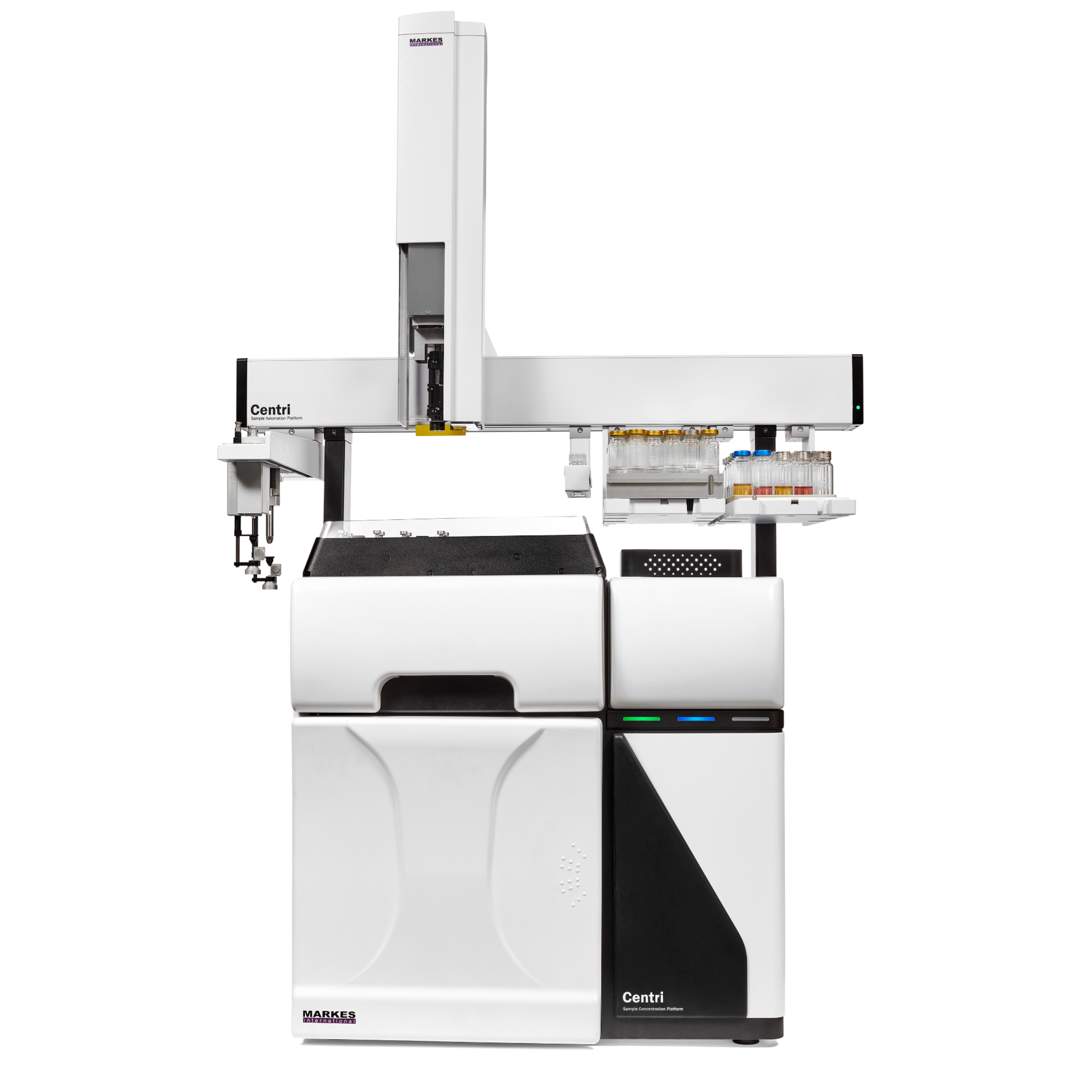方案详情文
智能文字提取功能测试中
X Selectivity thermoscientific APPLICATION NOTE 10643 Pvrolvsis-GC-Orbitrap MS-一apowerfulanalyticaltool for identification and quantification ofmicroplastics in a bioloaical matrix Authors Jorn Logemann1, Eystein Oveland2,Orjan Bjoroy2, Wibke Peters,Cristian Cojocariu4, and Tanja Kogel? 1Thermo Fisher Scientific, Dreieich,Germany 2Institute of Marine ResearchBergen, Norway 3S+H Analytik, Monchengladbach,Germany 4Thermo Fisher Scientific, Runcorn,United Kingdom Keywords Exactive GC, pyrolysis,microplastics, high resolution,Orbitrap technology, gaschromatography, fishmeal Goal The purpose of the experiments described in this work was to assess theapplicability of pyrolysis-gas chromatography-Orbitrap" mass spectrometryfor the qualitative and quantitative analysis of plastic polymers in complexbiological matrices. Introduction Plastics are synthetic organic polymers, commercially introduced ona large scale starting in the 1950s. Single-use plastics (grocery bags,food packaging, bottles, utensils) are persistent pollutants making upapproximately 40% of beach litter . This litter eventually ends up in the marineenvironment, with an estimated 8 million metric tons of plastic waste enteringthe oceans worldwide every year2. Most plastics have a very long degradationtime, and for a timespan up to centuries they end up as macro-, micro- ancnanoplastics through weathering. Due to their characteristics and additionalcontent (monomeric residue, plasticizers, flame retardants etc.), micro- andnanoplastics can have complex toxicological effects on marine life throughdirect ingestion3-5 and/or leachates. This might represent a hazard forecosystems and for human exposure through consumption and inhalation.As this is an emerging field, there are limited studies on the identification of plastic polymers, and stringent quantificationrequirements remain to be developed. Estimates ofplastic loads in the oceans range six orders of magnitude,while no comprehensive data exist for microplastics insoils despite considerable agricultural use. Among the analytical techniques used for the analysisof microplastics are Fourier Transform Infrared (FTIR),Raman spectroscopy and microscopy and alsopyrolysis-gas chromatography mass spectrometry(py-GC-MS). Py-GC-MS presents a promising approachfor surveillance where throughput is critical. Furthermore,this analytical approach would enable time-savingdetection of bulk amounts of micro- and nanoplasticsbelow the lower size limit of the microscopy techniques.Therefore, low detection limit, dynamic range, andlinearity as well as high compound selectivity andmeasurement uncertainty are crucial. In this study, the efficiency of pyrolysis GC coupledto high-resolution, accurate-mass spectrometry wasinvestigated for the qualitative and quantitative analysisof microplastics, as opposed to single quadrupole,which has been used in previously published work.The sample pyrolyzer was connected to a bench top,high-resolution accurate-mass Orbitrap-based GC-MSsystem that facilitates the detection and quantificationof low level compounds against a complex chemicalbackground. The experiments described here focused onpreliminary assessment of the power of accurate massfor the characterization of plastic polymers as well as thequantitative performance of this analytical configuration. Sample preparation Custom-made known plastics standards were obtainedthrough participation in the BASEMAN research project,which is financed as part of Joint Programming Initiative(JPI) Oceans, through the Norwegian Research Council (NFR). Aliquots of polymethyl methacrylate (PMMA) andpolystyrene (PS) standards, dissolved in ethyl acetate,were transferred to pyrolyzer cups with the final weightof each polymer in each cup approximately 0.05, 0.5, 5,and 50 pg. To investigate whether these polymers couldbe detected in a more complex matrix easily, fishmealwas decomposed using 10% KOH (w/w) at 50 ℃followed by 30% H,O, (w/w) at 40℃. Between 0.3 and0.5 g fishmeal resulted in about 5-10 mg decomposedmaterial, which was spiked with 2.5 pg PMMA and2.7 pg PS. To evaluate the qualitative properties of thepy-GC-MS, samples of solid polymers of polyamides(PA), polycarbonate (PC), polyethylene (PE), PMMA,polypropylene (PP), PS, polyvinyl chloride (PVC), andpoly(ethylene terephthalate) (PET) and mixtures thereof(10-100 pg of each polymer) were weighed into pyrolyzercups. To all samples, 10 pL tetramethylammoniumhydroxide (TMAH; Sigma-Aldrich; 25%, v/v) was addedas a methylating agent before analysis. Instrumental analysis The Frontier Lab's Multi-Shot Pyrolyzer(FrontierEGA/PY-3030D) with Auto-Shot Sampler (AS-1020E)was coupled to a Thermo Scientific" TRACE 1310 GasChromatograph with a Thermo Scientific"TraceGOLDTG-5SilMS 30mx0.25 mm l.D.×0.25 pm film capillarycolumn (P/N 26096-1420). The GC system was thencoupled to a Thermo ScientificExactiveGC OrbitrapTMmass spectrometer (Figure 1). The Exactive GC systemwas tuned and calibrated in under one minute usingPFTBA to achieve the best ion transmission andsub-ppm mass accuracy. The mass spectrometerwas operated in full-scan mode using 60,000 massresolution (measured as FWHM at m/z 200). Lockmasscorrected data was processed with Thermo ScientificTraceFindersoftware. Additional details regarding thepyrolysis, GC, and MS conditions are given in Tables 1and 2. Figure 1. Instrumental setup: Multi-Shot Pyrolyzer (Frontier EGA/PY-3030D) with Auto-Shot Sampler (AS-1020E) coupled to anExactive GC Orbitrap mass spectrometer Table 2. Mass spectrometer conditions Exactive GC Orbitrap Mass Spectrometer Parameters Transfer Line: 320°C lonization Type: EI lon Source: 280°℃ Electron Energy: 70eV Emission Current: 20 uA Acquisition Mode: Full-scan, centroid Mass Range: 50-650 Da Resolving Power: 60.000 FWHM at m/z 200 Lockmass, Column Bleed: 207.03235 m/z Data processing Data was acquired in full-scan centroid modeusing TraceFinder software, version 4.1. This is asingle software platform that allows instrument control,method development functionality, and qualitative andquantitation-focused workflows. TraceFinder softwarealso contains spectral deconvolution and spectralmatching functionality. Results and discussion The applicability of the Exactive GC Orbitrap GC-MSsystem in combination with pyrolysis for qualitative andquantitative assessment of microplastics was testedusing both standards and fishmeal that were spikedwith known amounts of plastic polymers. Indicator exactmasses,characteristic for the plastic compounds, wereextracted using different m/z windows to demonstrateadvantages of high-resolution, accurate-masscapabilities for this application. Sensitivity, selectivity and linearityLinearity was tested using PS and PMMA standardswith the concentration points of 0.05, 0.5, 5, and 50 pg,which is a range that corresponds to amounts found inreal samples analyzed with pyrolysis-GC-MS (Kogel et al.unpublished). Excellent linear responses were obtainedfor both compounds with coefficient of determinationsR²>0.999 and %RSD for residuals <15% (Figure 2-1).Using the GC-MS conditions described in Tables 1and 2, the number of scans/chromatographic peakexceed 25 scans for a 3.5-second-wide peak for PS,and 20 scans for PMMA, allowing for and enablingaccurate peak integration and compound quantification(Figure 2-2). . Calibration Curve Calibration Curve Figure 2-1. Chromatography and linearity of styrene (top) and methyl methacrylate (bottom) in a 0.05 pg standard. Extracted ionchromatograms of styrene (m/z 104.0621) and methyl methacrylate (m/z 99.0441) were used to assess the linearity of response (R? and RF %RSDresiduals) over four concentration points 0.05-50 pg (A and B). Quan Peak Ion Overlay 1.86 Quan PeakKal 0-5 styrene m/z: 104.0621 Ion Overlay 凶 Figure 2-2. Chromatography and linearity of methyl methacrylate (top) and styrene (bottom) in a 0.05 pg standard. C shows integratedpeak area of the quantification ion with corresponding scans/peak, and D shows an overlay of the quantification ion and the confirmation ion. Datawere acquired in full-scan at 60,000 resolution (FWHM at m/z 200). Peak retention time (RT) as well as peak area counts (AA) are annotated. Peaksmoothing (5x moving average was applied). Consistent mass accuracy In addition to the quantification performance, the massaccuracy of target compounds was assessed across allthe concentrations. Obtaining accurate mass informationis critical to avoid misidentification and erroneous quantification. For all compounds targeted, the massaccuracy was < 1 ppm irrespective of matrix complexityor concentration level. Figure 3 shows an example ofconsistently high mass accuracy maintained for all ions inPS spectra measured in the lowest (0.05 pg) and at thehighest standard (50 pg). A 78.046460.78123 ppm 74.0151663.02298 C6H2C5H3 0.78728ppm0.86302 ppm70.07779 Kal50 1 ppm 1003 90: 80: 703 60 50: 40: 30: 20: 10: Quantification of microplastics in a decomposedfishmeal sample spiked with PS and PMMATo assess the accuracy of quantification of microplasticsusing the Exactive GC Orbitrap py-GC-MS approach,a fishmeal sample was spiked with known amounts ofPS and PMMA (Table 3) and back calculation of these amounts was performed using individual PS and PMMAexternal standard calibration curves over the range of0.05 to 50 pg. Even without using internal standardcorrection, the average % deviation from the expectedresults was good (-2.3% as average deviation calculatedfor PS and PMMA) for analysis in complex matrixes(Table3). By using the Exactive GC Orbitrap py-GC-MS operatedat routine 60,000 resolution, it is possible to selectivelyisolate m/z values corresponding to pyrolysis products ofvarious polymers. Examples of selectivity for PA,PC, PE, PMMA, PP, PS, PVC, and PET are shown inFigures 4 and 5. Typical fragment masses used toidentify and quantify the different plastic materials differfrom m/z 78 (PVC) to m/z 228 (PC). The minimum massdifference that is meaningful to use when extractingthe quantifier ions is a function of the resolution used. Figure 4 shows extracted quantifier ions; the ions areextracted at ±5 ppm, just above the smallest massdifference that can be resolved with a resolution of60,000. The many characteristic peaks of the x-mericpyrolytic products of the polymer types with very smallmonomers (PP and PE) are clearly visible. Anotherimportant feature is the clearly peaking multimers of PS,which are necessary for selective quantification of PS,excluding the monomeric styrene, which is a pyrolysisproduct also deriving from natural marine chitin°. Figure 4. Selectivity for PMMA, PVC, PE,PS, PET, PC, PA, and PP polymers demonstrated as extracted ion chromatograms of eachpolymer using a ±5 ppm extraction window In addition, the importance of high-resolution accurate-mass mass spectrometry for selectivity is demonstratedin Figure 5 for PA and Figure 6 for PS. Using an extractionwindow of >±100 mmu to simulate a low-resolution massspectrometer, crowded extracted ion chromatograms are seen. When taking advantage of the accurate massmeasured by using an extraction window of ±2 ppm, thechromatographic peaks selected for quantification aremore evident. Figure 5. Selectivity for PA fragments, RT=8.10 min, using an extraction window for m/z 113.08352 of ±100 mmu (equivalent to ~850 ppm)simulating a mass resolution of ~1100 (top) and ±2 ppm taking advantage of the accurate mass measured (bottom) 10.39 9.0 9.5 10.0 10.5 11.0 11.5 Time (min) Figure 6. Full-scan accurate mass selectivity demonstrated for PS in a mixed sample containingPS, PA, PC, PE, PMMA, PP, PVC, and PET. Accurate mass measurements enable confident detection(±5 ppm,A), whereas at nominal mass acquisitions additional interfering compounds can be detected(±100 mmu, B and ±800 mmu C). · The Exactive GC Orbitrap GC-MS system demonstratesexcellent linear response over a concentration rangeof 0.05 pg to 50 pg absolute weight for each plasticmaterial with accurate quantitative estimation ofmicroplastic polymers in real samples · The high resolving power of the Exactive GC OrbitrapGC-MS system facilitates sub-ppm mass accuracy atlow and high concentrations, essential for achievingenough selectivity to confidently separate and identifypyrolysis products and reduces detection limits (ex: PSand PP). · Full-scan acquisition enables the detection andidentification of additional compounds producedduring the pyrolysis process of microplastics. Putativeidentifications require confirmation using analyticalstandards. · The Exactive GC Orbitrap GC-MS system incombination with pyrolysis has proven to be a verypromising analytical technique that opens newpossibilities with respect to the analysis of microplastic.polymers in biological matrices. Figure 7. TraceFinder deconvolution browser showing a-methylstyrene (RT=5.1 min) tentative identification based on library (NIST)match (reverse search index, Sl 901), fragment rationalization with a confidence score>97% and mass accuracies of measured fragments(e.g., base peak m/z 117.069,A=0.3). Samples processed (A), peaks detected (B), identified chemicals (C), acquired versus library spectra (D),and deconvoluted mass spectra for a-methylstyrene (E) are indicated. References 1. Plastics - the Facts 2016 An analysis of European latest plastics production, demandand waste data. https://www.plasticseurope.org/application/files/4315/1310/4805/plastic-the-fact-2016.pdf 2.Jambeck, J.R., et al. Plastic waste inputs from land into the ocean. Science 2015,347.6223,768-771. 3.Peda, C.; Caccamo, L.; Fossi, M. C.; Gai,F;Andaloro, F; Genovese, L.; Perdichizzi,A.; Romeo, T.; and Maricchiolo, G. Intestinal alterations in European sea bassDicentrarchus labrax (Linnaeus, 1758) exposed to microplastics: Preliminary results.Environ Pollut 2016, 212,251-256. 4, Jeong, C. B.; Kang, H. M.; Lee, M. C.; Kim, D. H.; Han, J.; Hwang, D. S.; Souissi, S.;Lee, S. J.; Shin, K. H.; Park, H.G.; and Lee, J. S. Adverse effects of microplastics andoxidative stress-induced MAPK/Nrf2 pathway-mediated defence mechanisms in themarine copepod Paracyclopina nana. Sci Rep-Uk 2017, 7, 41323. 5.Mattsson, K.; Johnson, E. V.; Malmendal, A.; Linse, S.; Hansson,L. A.; and Cedervall,T. Brain damage and behavioural disorders in fish induced by plastic nanoparticlesdelivered through the food chain. Sci Rep-Uk 2017,7,11452. .6Bejgarn, S.; MacLeod, M.; Bogdal, C.; Breitholtz, M. Toxicity of leachate fromweathering plastics: an exploratory screening study with Nitocra spinipes.Chemosphere2015,132,114-19. .7.Dris, R.; Gasperi, J.; Rocher,V.; Saad, M.; Renault, N.; and Tassin, B. Microplasticcontamination in an urban area: a case study in Greater Paris. Environ Chem 2015,12,592-599. 8.Alimi, O. S.; Budarz, J.F; Hernandez, L.M.; and Tufenkji, N. Microplastics andNanoplastics in Aquatic Environments: Aggregation, Deposition, and EnhancedContaminant Transport. Environ Sci Techno/2018, 52, 1704-1724. 9 Fischer, M. and Scholz-Bottcher, B. M. Simultaneous Trace ldentification andQuantification of Common Types of Microplastics in Environmental Samples byPyrolysis-Gas Chromatography-Mass Spectrometry. Environ Sci Techno/ 2017, 51,5052-5060. 10. Fabbri, D.; Trombini, C.; and Vassura 1. Analysis of polystyrene in polluted sedimentsby pyrolysis-gas chromatography-mass spectrometry. Journal of ChromatographicScience 1998, 36,600-604. ( ◎2018 T her mo Fi s he r S ci entif i c I n c . All rig h ts res e rve d . A l l tra d emarks a re t h e p r op e rt y o f T hermo Fis he r Scient if ic a n d i ts subsidi a ries u n l es s ot h er wise s p e c if ie d. M ul t i -Shot Pyrolyzer an d A u to - S ho t Sa m pler ar e r egis t er ed t rade m ar ks of Fro n ti er La b o rato r ies, L t d . T his i nf ormat i o n i s p re se nte d as a n e x amp le o f the capabi l ities o f Ther mo Fi s he r Scient if i c produc t s . I t is n ot i nte nd e d t o enc ou rage us e of the s e products in an y m anners th at mig h t i n f r in g e t he in te ll e c tu al pro p er t y r i ghts of o th ers . Spec i ficat i on s , te rms and p r i cin g are s ubject to ch a nge . Not al l pr od ucts a r e avail a ble in al l c o untries. Pleas e co ns ult you r loc a l s al e s r e pr e sen ta ti v es f o r d e tai ls. AN10643 - EN 0 718S ) ThermoFisherS CIENTIFI C Plastics are synthetic organic polymers, commercially introduced on a large scale starting in the 1950s. Single-use plastics (grocery bags, food packaging, bottles, utensils) are persistent pollutants making up approximately 40% of beach litter1 . This litter eventually ends up in the marine environment, with an estimated 8 million metric tons of plastic waste entering the oceans worldwide every year2 . Most plastics have a very long degradation time, and for a timespan up to centuries they end up as macro-, micro- and nanoplastics through weathering. Due to their characteristics and additional content (monomeric residue, plasticizers, flame retardants etc.), micro- and nanoplastics can have complex toxicological effects on marine life through direct ingestion3-5 and/or leachates6. This might represent a hazard for ecosystems and for human exposure through consumption and inhalation7 . As this is an emerging field, there are limited studies on the identification of plastic polymers, and stringent quantification requirements remain to be developed. Estimates of plastic loads in the oceans range six orders of magnitude, while no comprehensive data exist for microplastics in soils despite considerable agricultural use8.
关闭-
1/11
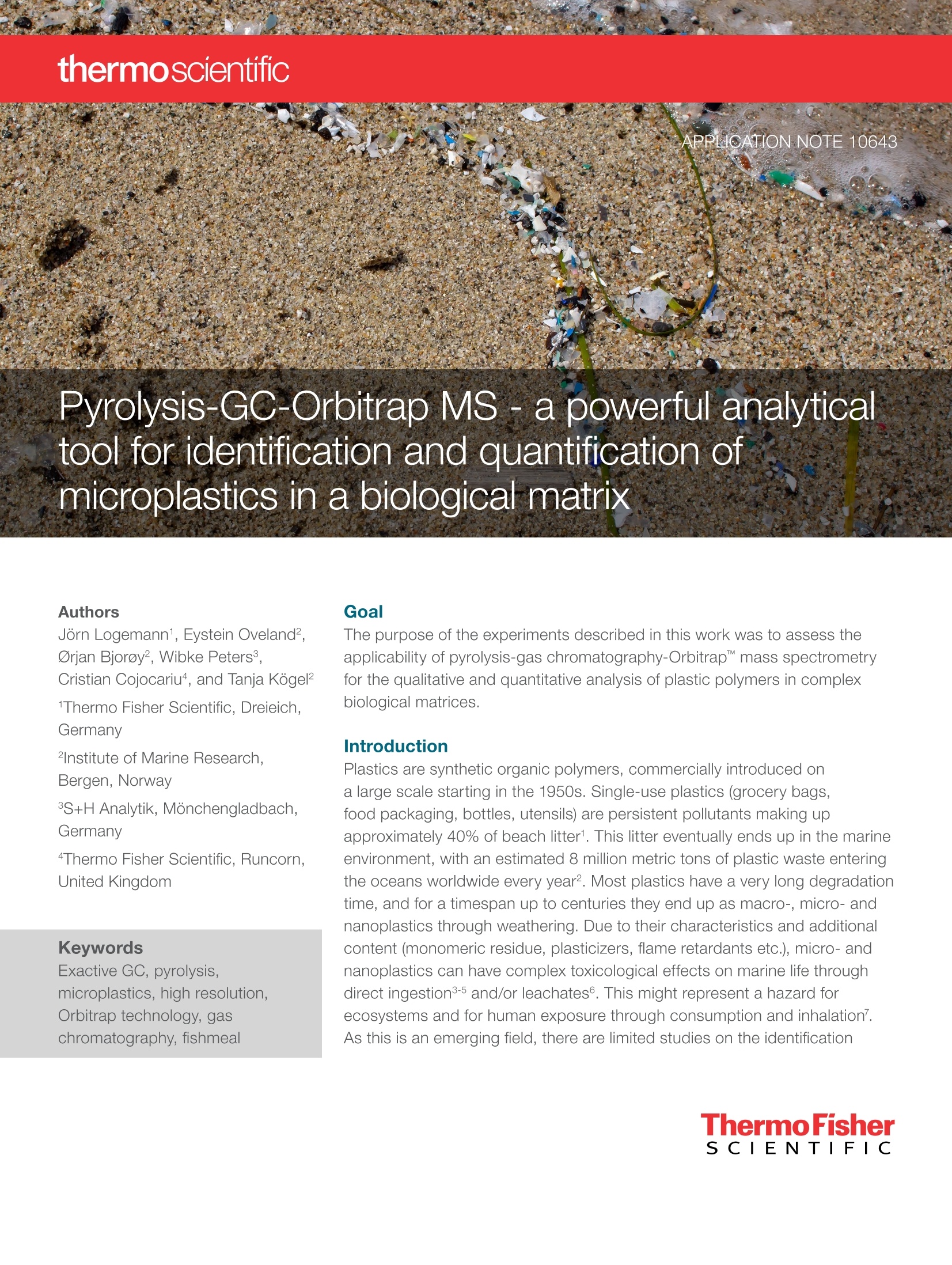
-
2/11

还剩9页未读,是否继续阅读?
继续免费阅读全文产品配置单
赛默飞世尔科技(中国)有限公司集团展位为您提供《生物基质中微塑料检测方案(气质联用仪)》,该方案主要用于生物发酵中微塑料检测,参考标准《暂无》,《生物基质中微塑料检测方案(气质联用仪)》用到的仪器有赛默飞Exactive GC Orbitrap GC-MS系统、赛默飞AI/AS 1310 自动进样器。
我要纠错


